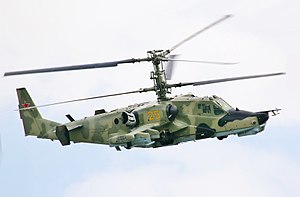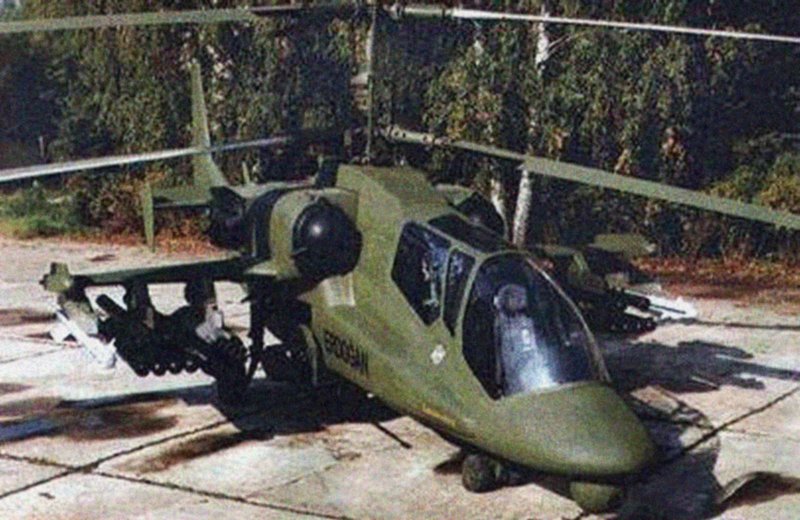In 1997, Israel Aerospace Industries (IAI) in cooperation with the Kamov bureau entered the Ka-50-2 Erdogan (Turkish for "Born Warrior") in a Turkish design competition for a $4 billion contract for 145 (later changed to 50) combat helicopters.
The Ka-50-2 is a tandem cockpit variant of the Ka-50. It featured a modern, Israeli-made "glass cockpit" avionics and a turret-mounted folding (for landing clearance) 30 mm cannon instead of the fixed cannon on the Ka-50. It features combat-proven avionics and advanced anti-tank guided missiles for a high level of combat effectiveness. The helicopter has excellent flight performance, and high combat survivability due to its coaxial rotor technology. It is equipped with IAI's flexible modular avionics suite, which can be readily tailored to meet the TLF's operational requirements and provides growth potential.
IAI and Kamov performed flights of the variant with IAI's Core Avionics. These flights demonstrated the helicopter's "glass cockpit" with multifunctional displays and Control and Display Unit (CDU) driven by centralized mission computers. Also tested were its flight navigation and the operation of the Helicopter Multi-Mission Optronic Stabilized Payload (HMOSP) targeting system. The demonstration flights included night mission capability demonstrations using Night Vision Goggles (NVG) and the day/night targeting system.
The Erdogan, Eurocopter Tiger, AH-64 Apache, AH-2 Rooivalk and A129 Mangusta helicopters lost to an improved version of AH-1 SuperCobra. In the end the contract went to the A129 in 2007.


